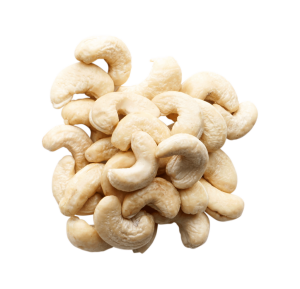Background: Examination of IgE cross-reactivity among nuts has been limited to in vitro experiments. Cross-reactivity studies of nuts at the T cell level are difficult to interpret because of the inability to determine which cellular responses are from a true sensitization and which are due to cross-reactivity. Using a mouse model in which the sensitizing nuts are controlled may provide novel methods to investigate in vivo and T cell cross-reactivity. Methods: C3H/HeJ mice were sensitized by intraperitoneal injection of cashew alone (monosensitized mice); or cashew plus walnut; utilizing alum as an adjuvant. Both groups underwent challenges to cashew; walnut and peanut; with subsequent monitoring of anaphylactic reactions. Anaphylactic antibodies were quantified by ELISA; and protein allergens were identified by Western blotting. Cellular responses were studied via splenocyte proliferation assay and measurement of secreted cytokines. Results: The monosensitized mice reacted to cashew and walnut during challenges; with significantly weaker reactions induced on challenge with peanut. Cross-reactive IgE to walnut and peanut were detected by ELISA; and the cross-reactive allergens were identified as vicilin proteins. In cellular assays; splenocytes from the monosensitized mice proliferated and produced IL-4 and IL-5 in response to cashew; walnut and peanut. The cashew- plus walnut-sensitized mice experienced stronger clinical reactions to walnut; recognized additional walnut allergens and secreted significantly more IL-4 and IL-5 in walnut-stimulated splenocyte assays compared to the monosensitized mice. Conclusions: Cross-reactivity in vivo was found between cashew and walnut; while cross-reactivity among cashew; walnut and peanut was demonstrated at the T cell level.
